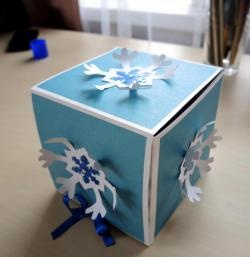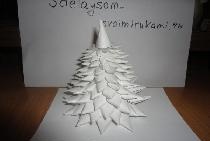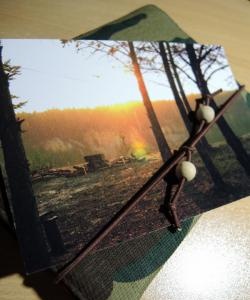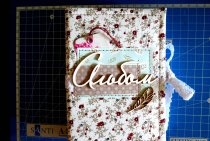Original photo album
For the album you will need the following materials:
- Two sheets of double-sided cardboard (as an alternative, you can use pastel paper)
- Whatman (A1)
- Photos of different sizes and shapes (circles, squares, etc.)
- Several sheets of paper of the same color
- White thread (it is better that it is thicker than regular sewing thread)
- Thick needle and curved needle
- Glue
- Pencil
- Ruler
- Scissors
- Elastic band (approximately 60 cm)
- Ribbon (plain or patterned)
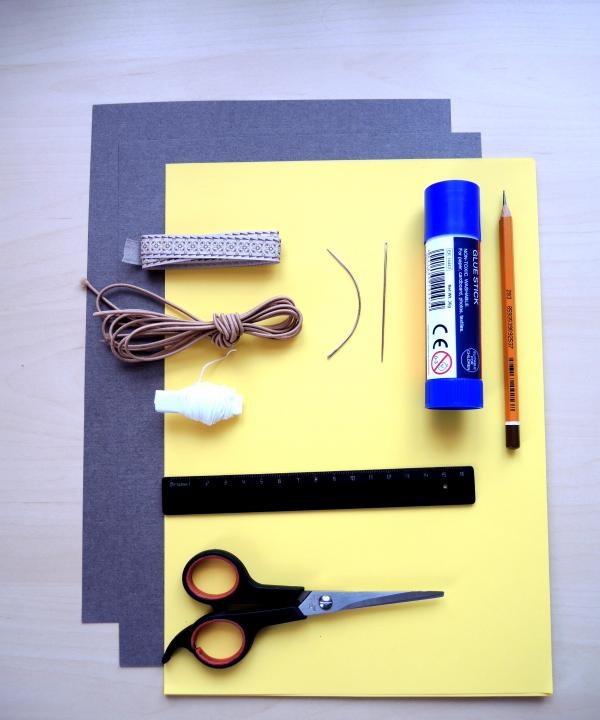
The first step is to prepare the album sheets. To do this, we will draw a sheet of whatman paper into parts, each of which will be the size of an A4 sheet. The diagram below shows the cut lines and fold lines.
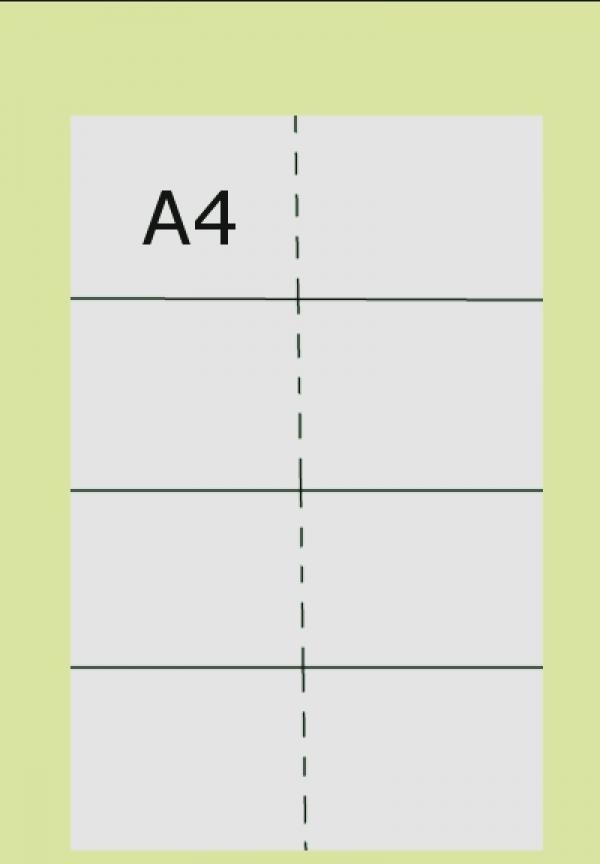
Then we place the printed and cut out photographs on these album spreads. But we glue them only on one side, leaving the back side empty.
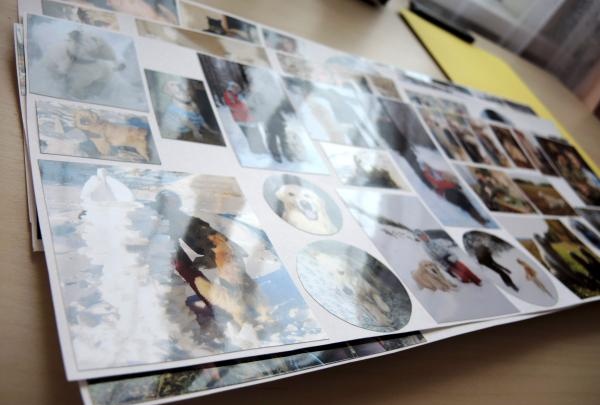
Next, we glue sheets of colored paper onto the free turns, leaving a couple of millimeters between them in the middle, so the paper glued to the Whatman paper will not interfere with the free bending of the Whatman sheet and will not spoil the appearance.
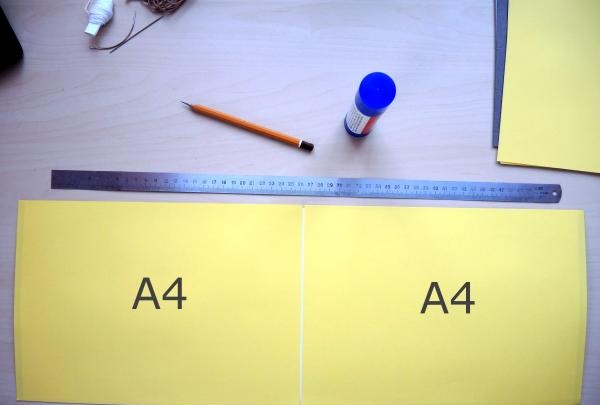
We do not cover the two spreads with colored paper, we leave them white.

The number of pages depends only on the abundance of your photographs, so you can increase or decrease it: this will not make the process of creating an album more difficult.
Now, using a straight large needle, we make an odd number (in this MK there are 5) holes on the fold of each spread, as well as on the covers. On the cover, step back approximately 1-1.5 cm from the edge.
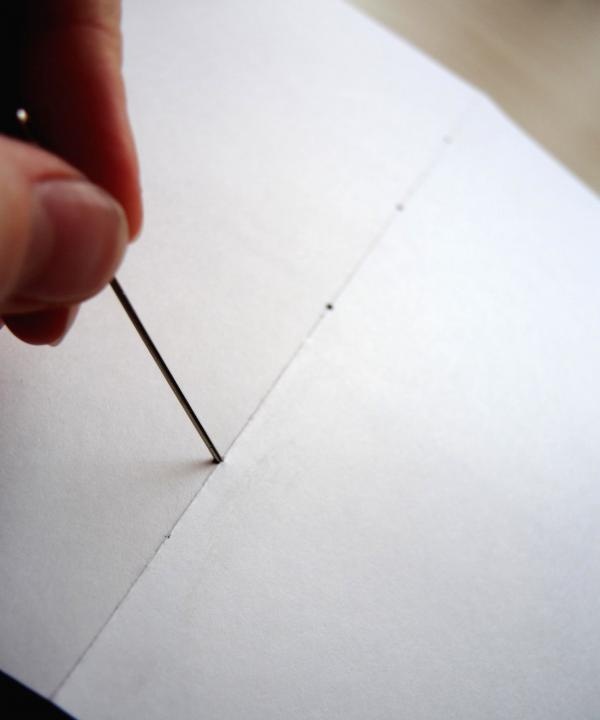
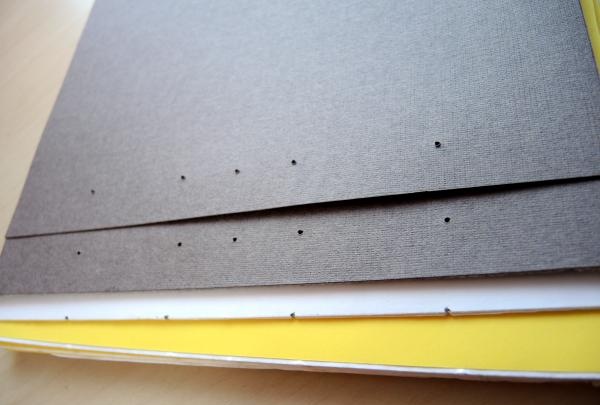
Next, we proceed to stitching the sheets and covers together. Place the spreads on which colored paper was not glued, one at the beginning, the other at the end.
Take the first spread and thread the thread as shown in the photo below, leaving a small tail.
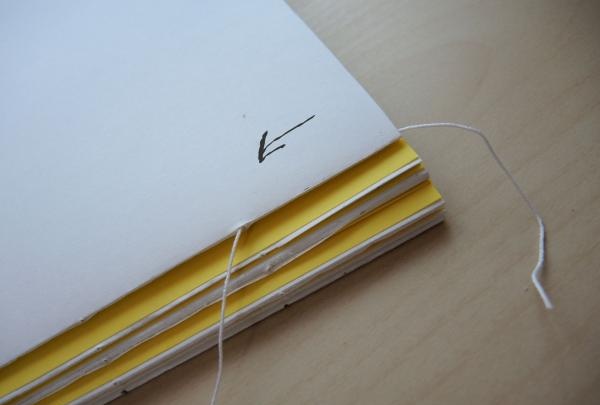
Now we place this spread on top of the cover. We put the thread under the cover and pull it up through the hole, then return it to the opening of the spread.
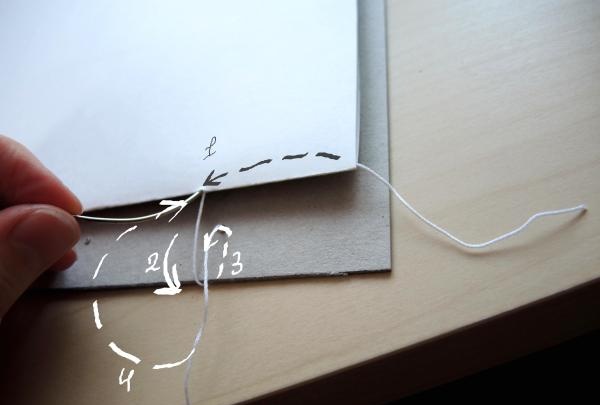
Inside the spread, we thread the thread into the next hole and bring it out, then repeat the same steps as in the previous step.
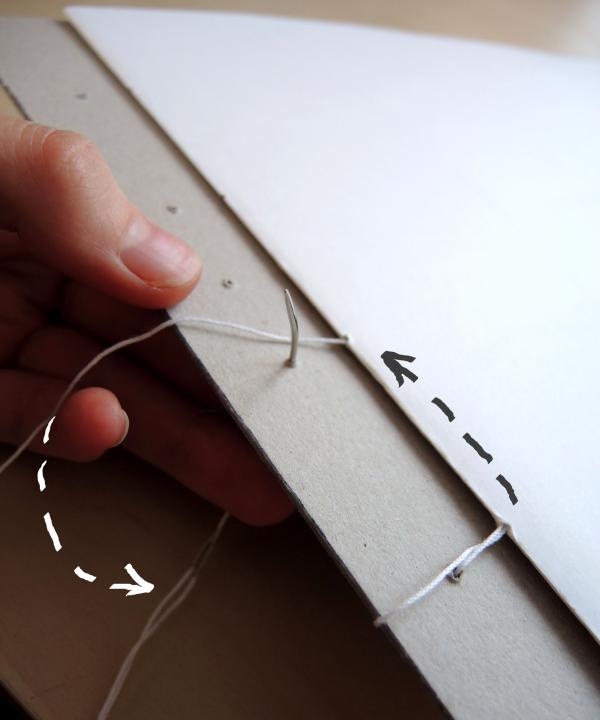
Approaching the end of the row, insert the needle into the hole of the next spread. Then we proceed by analogy.
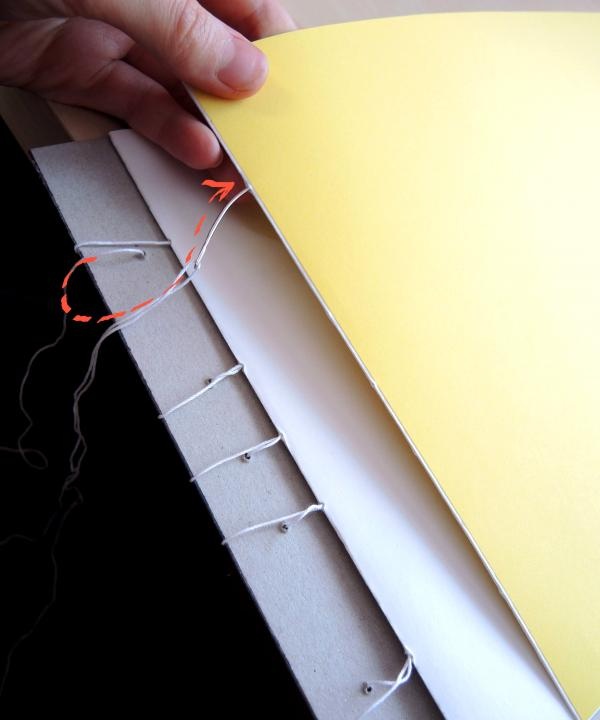
Having finished the second row, we tighten the thread tightly so that the sheets do not slide relative to each other.
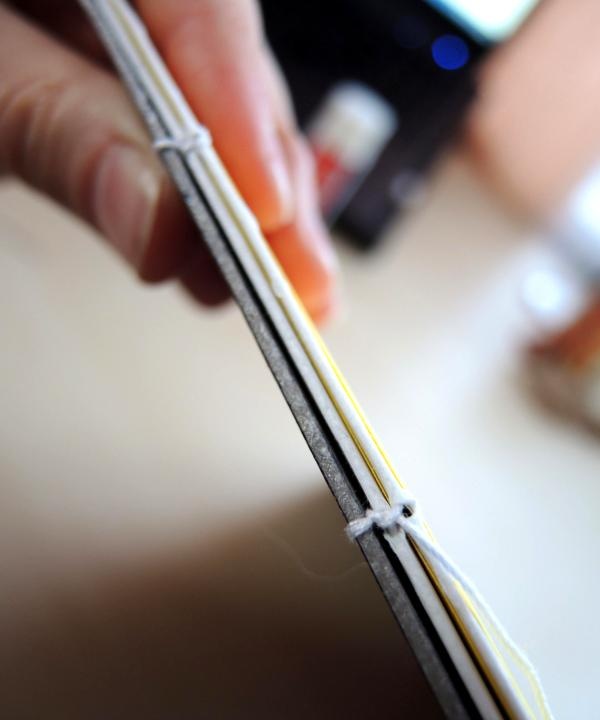
The result is such a neat seam that there is no need to hide it with covers.
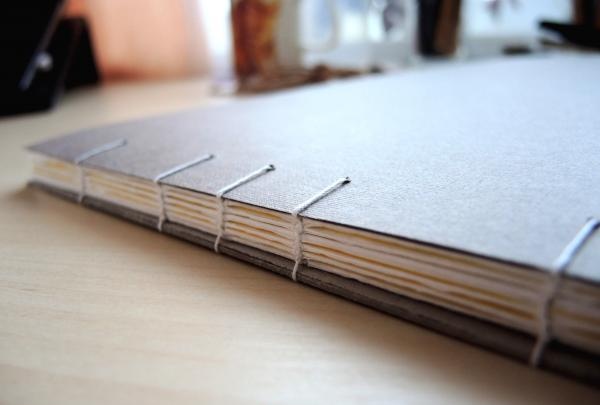
Now all that’s left to do is decorate the cover.
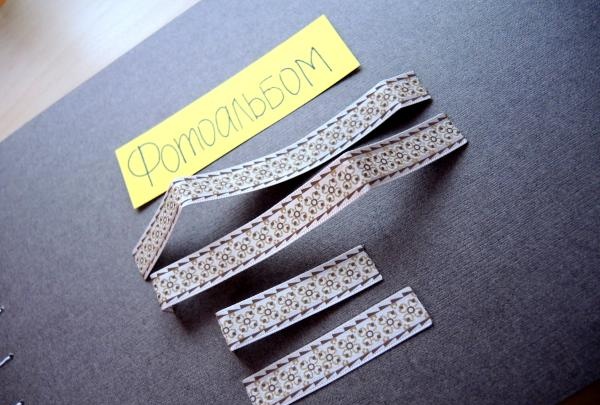
We'll make a kind of “clasp” out of an elastic band and the album is ready!
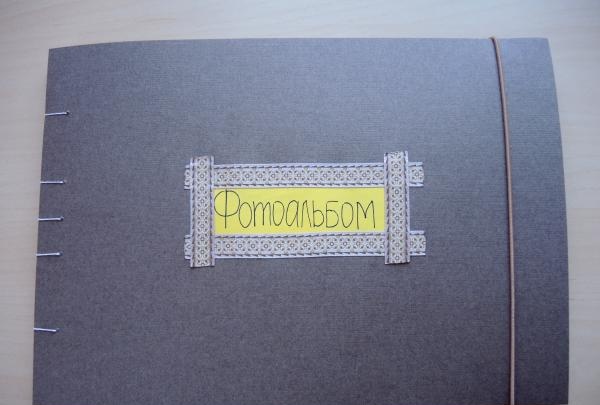
This is just one of millions of options for decorating the cover; you can come up with something of your own. On spreads covered with colored paper, it will be possible to place photographs that will appear in the future.
Creative success!
- Two sheets of double-sided cardboard (as an alternative, you can use pastel paper)
- Whatman (A1)
- Photos of different sizes and shapes (circles, squares, etc.)
- Several sheets of paper of the same color
- White thread (it is better that it is thicker than regular sewing thread)
- Thick needle and curved needle
- Glue
- Pencil
- Ruler
- Scissors
- Elastic band (approximately 60 cm)
- Ribbon (plain or patterned)

The first step is to prepare the album sheets. To do this, we will draw a sheet of whatman paper into parts, each of which will be the size of an A4 sheet. The diagram below shows the cut lines and fold lines.

Then we place the printed and cut out photographs on these album spreads. But we glue them only on one side, leaving the back side empty.

Next, we glue sheets of colored paper onto the free turns, leaving a couple of millimeters between them in the middle, so the paper glued to the Whatman paper will not interfere with the free bending of the Whatman sheet and will not spoil the appearance.

We do not cover the two spreads with colored paper, we leave them white.

The number of pages depends only on the abundance of your photographs, so you can increase or decrease it: this will not make the process of creating an album more difficult.
Now, using a straight large needle, we make an odd number (in this MK there are 5) holes on the fold of each spread, as well as on the covers. On the cover, step back approximately 1-1.5 cm from the edge.


Next, we proceed to stitching the sheets and covers together. Place the spreads on which colored paper was not glued, one at the beginning, the other at the end.
Take the first spread and thread the thread as shown in the photo below, leaving a small tail.

Now we place this spread on top of the cover. We put the thread under the cover and pull it up through the hole, then return it to the opening of the spread.

Inside the spread, we thread the thread into the next hole and bring it out, then repeat the same steps as in the previous step.

Approaching the end of the row, insert the needle into the hole of the next spread. Then we proceed by analogy.

Having finished the second row, we tighten the thread tightly so that the sheets do not slide relative to each other.

The result is such a neat seam that there is no need to hide it with covers.

Now all that’s left to do is decorate the cover.

We'll make a kind of “clasp” out of an elastic band and the album is ready!

This is just one of millions of options for decorating the cover; you can come up with something of your own. On spreads covered with colored paper, it will be possible to place photographs that will appear in the future.
Creative success!
Similar master classes
Particularly interesting
Comments (0)

